View from the Hill 14th August 2020
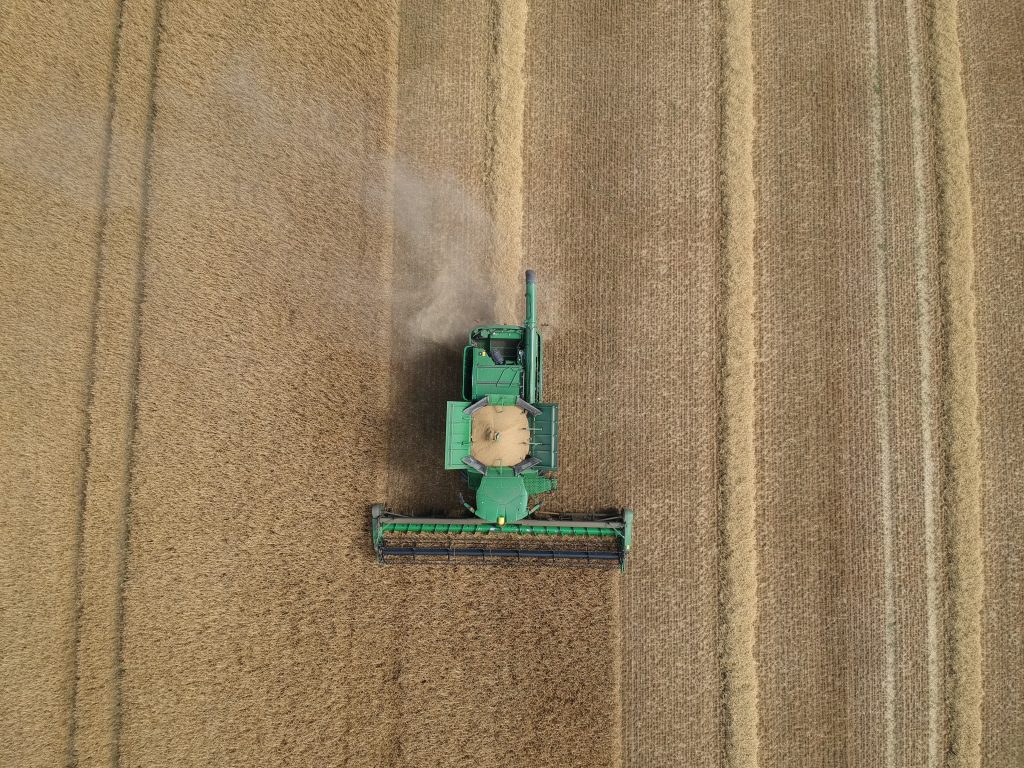
Our new combine has rampaged through our cereal crops, cutting on 22 out of the 28 days available between 15th July and 12th August. 2 brief rain breaks, and a 5 day break in the rape as it was not all fit, interspersed what has otherwise been a bit of a marathon. Very much a harvest of parts, the wheat has unexpectedly gone a long way to counteract the terrible rape and poppy crops and indifferent barleys. The straw men have been pleased to be able to press on close behind the combine as the dry conditions have meant straw was fit for baling straight away, and only a small area of greenish straw got wet in the storms today, the rest is stacked in the field if it has not already been hauled away.
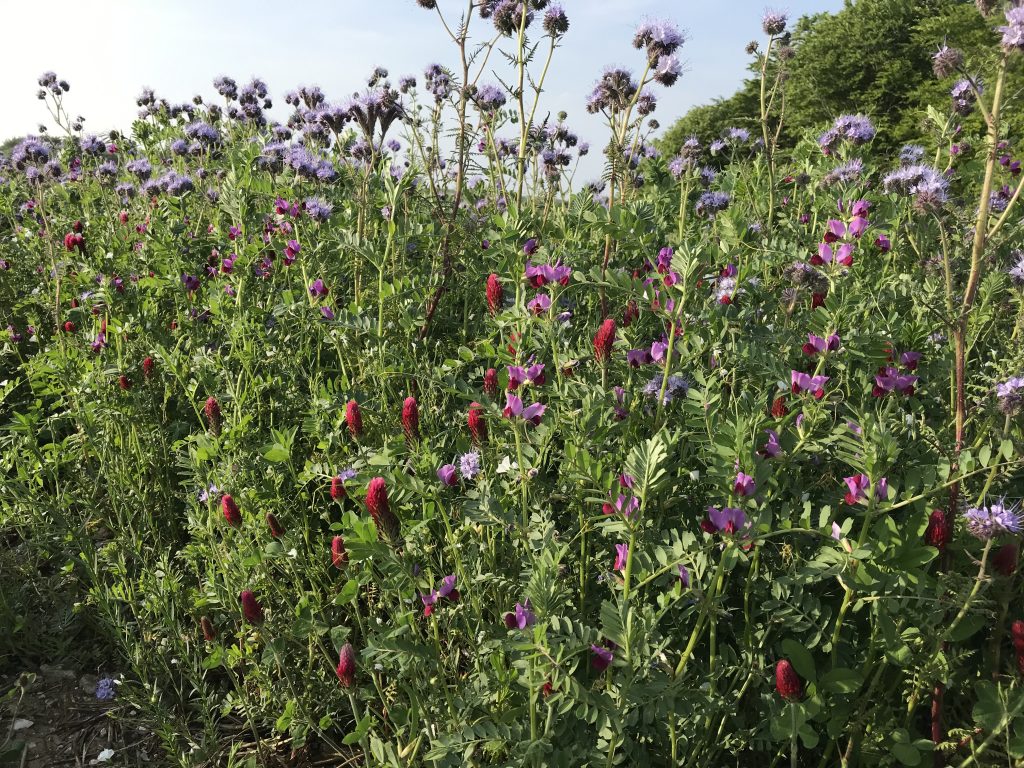
A short break from the cutting of regular crops took us to the field containing 3 hectares of over-wintered cover crop, which we had left in the field in spring, wondering if it might produce some useful combinable seed. As a reminder, this is what it looked like in the spring, full of insect activity in early May.
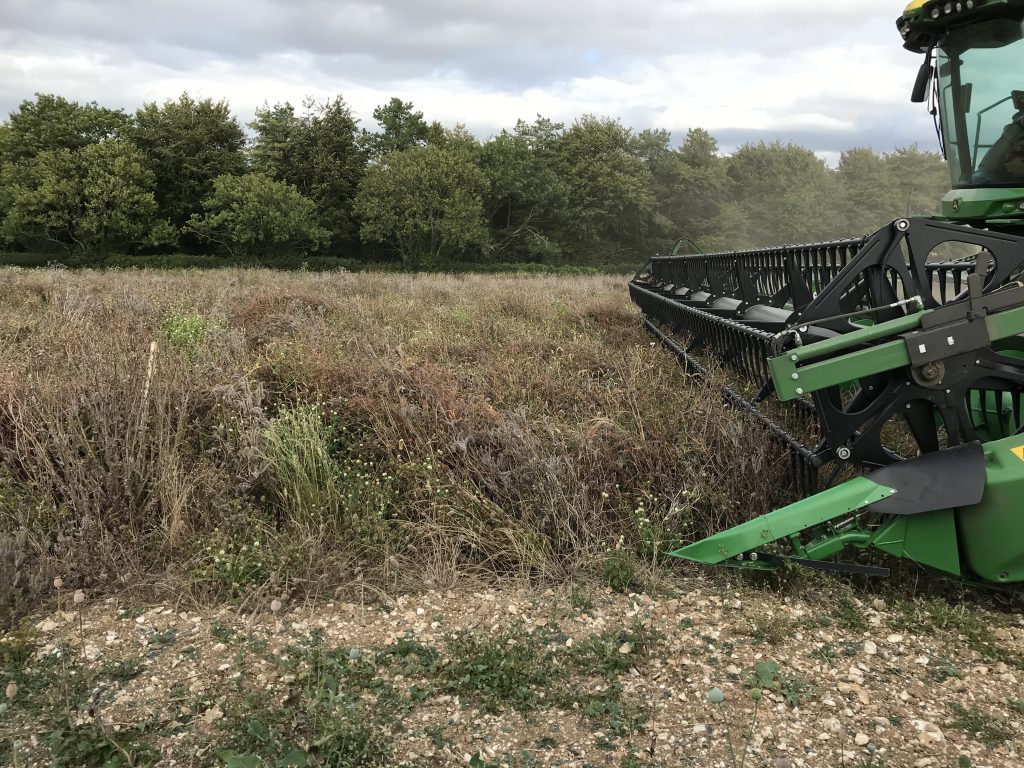
We first tried it on 21st July, but the vetch was still very green, so we left it for a couple of weeks and went back on 4th August, and managed to get a pretty useful sample. It consists of phacelia, vetch, linseed and clover, sown in September last year. We had no intention that we would be trying to harvest this summer it when we sowed it, but in the spring thought it was worth a gamble. At the second attempt we collected a couple of tons of seed, approximately 60% vetch, 30% linseed, plus a useful amount of clover and phacelia seed, which are both tiny, plus a few wheat grains, but surprisingly little in the way of unwanted weeds.
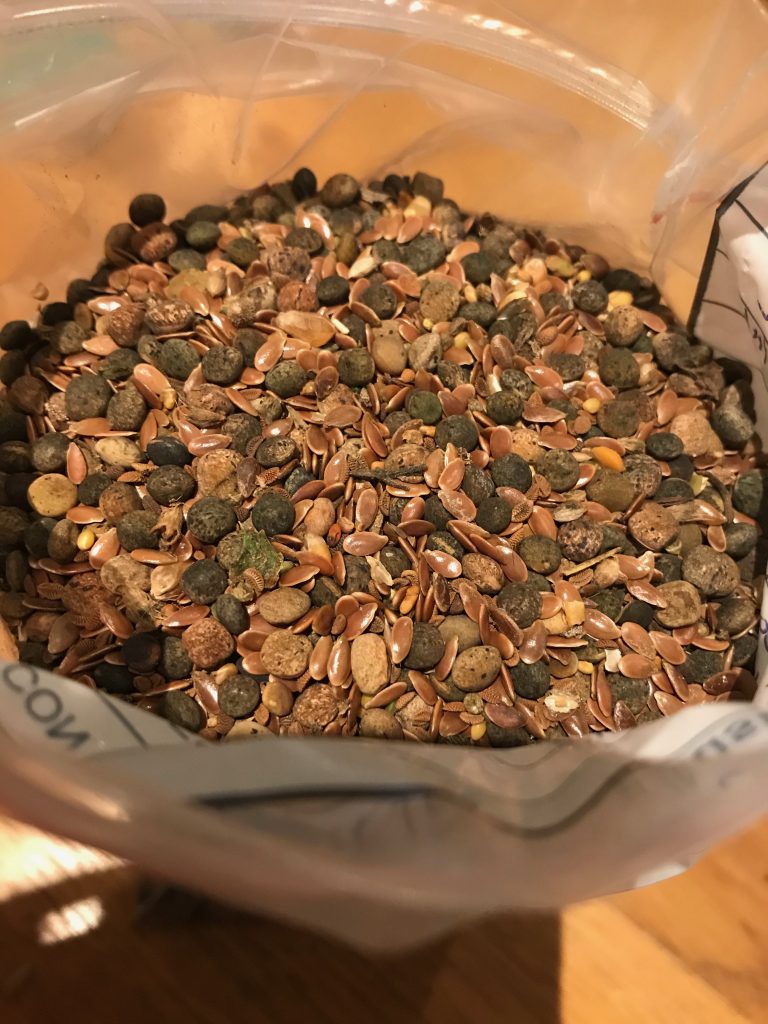
Here is a picture of the seeds, and then one showing them sorted into species.

We have since sown some of these seeds, augmented with other bought species, as manure crops, into freshly harvested fields which won’t be sown with the next cash crop until next spring. If we get any rain, I hope the plants will germinate and grow strongly to nurture the soil, feed the microbes, and maybe even fix some nitrogen, adding organic matter along the way.
The amazing weather has given us a fantastic run of harvesting, some parcels of grain have needed drying, with the constant threat of thunderstorms we have been keen to push on with cutting, worried that the weather might turn and give us 2 weeks of rain, which would mean a lot more drying needed in the grainstore, but in the last week or so the moisture levels have been very low, and no drying needed. However grain has been coming into store at over 30 degrees, and this will take a lot of cooling to get it down to safe storage temperatures. With beans and poppies still to harvest, we haven’t technically finished, but with the cereals in the barn, the pressure is somewhat reduced.
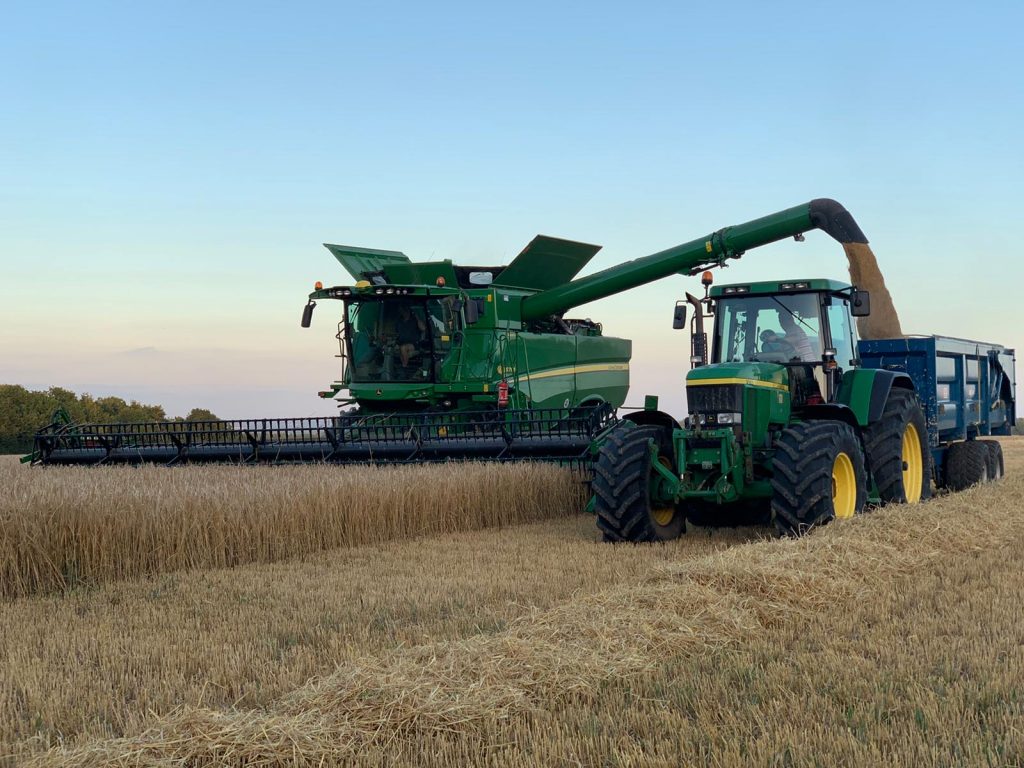
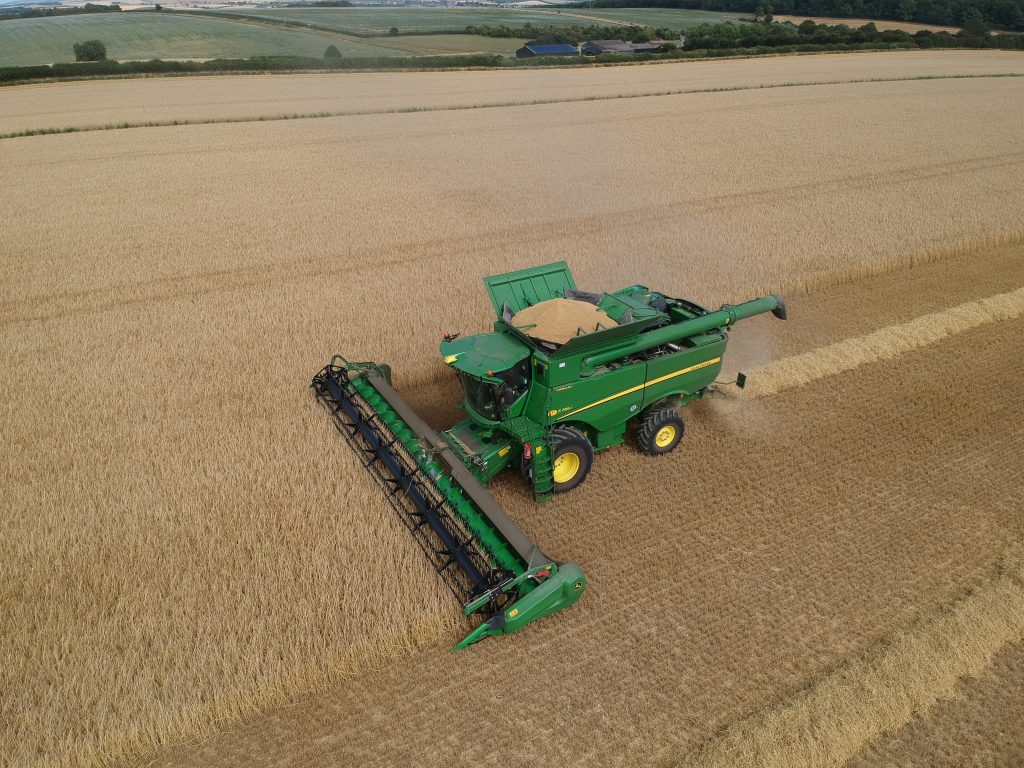
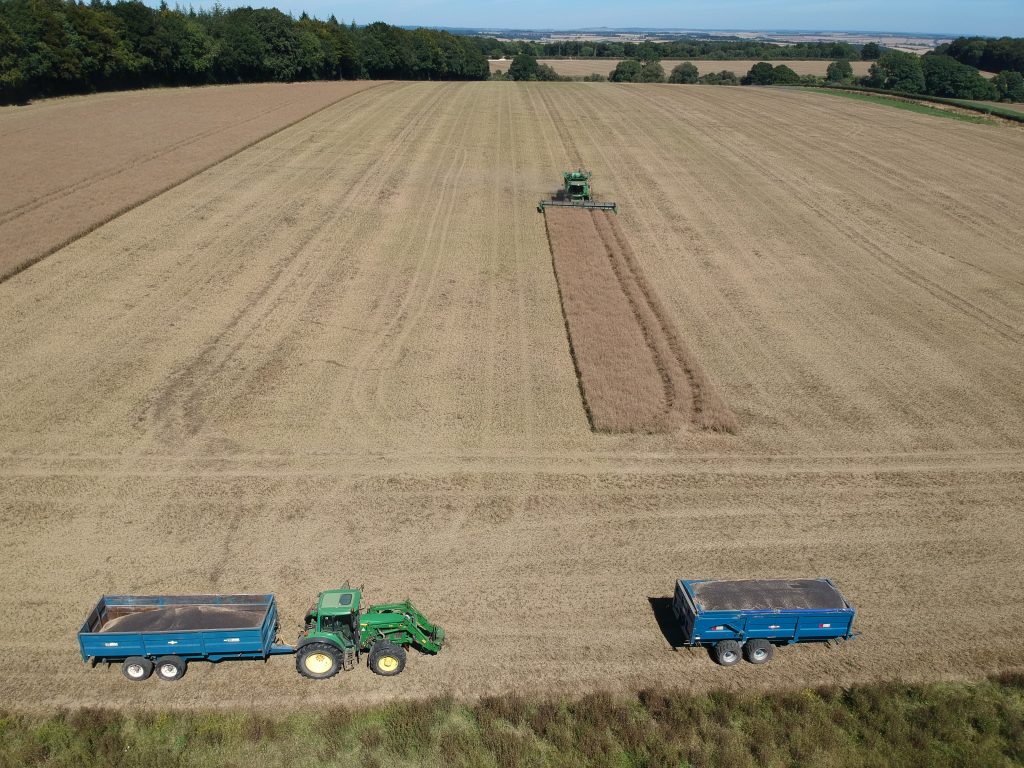
The rape crop was a bit disappointing, and sadly the field with the sheep grazing trial did not show up any earth-shattering effects. Here is the combine at work in it, and below is a montage containing the yield map, and a diagram of the treatments the field received, showing that if anything, the ungrazed patch yielded better than the grazed area, even though the grazing showed a considerable reduction in flea beetle larvae found in the plants in March.
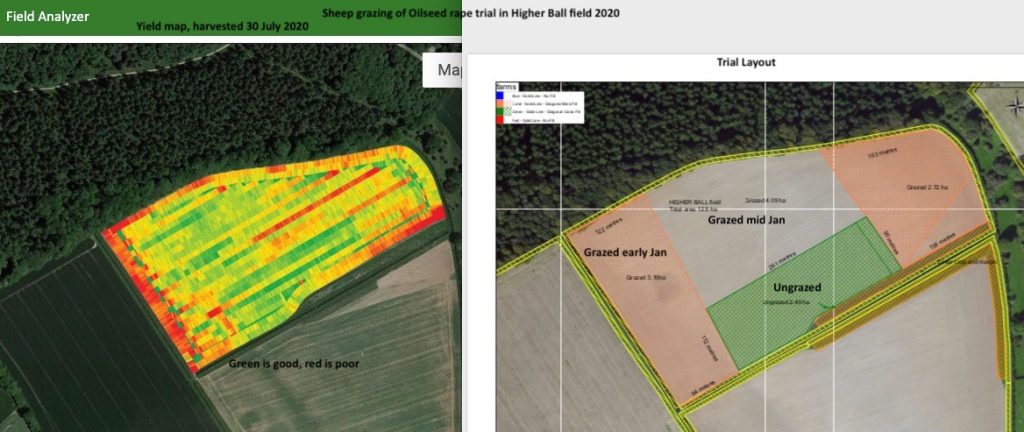
Perhaps we should not be too surprised, getting your sheep to eat the crop down nearly to the ground in winter probably isn’t going to increase the yield! However, the flea beetle poses us a huge issue, many many farmers have already given up on rape. It can be a very effective break crop and used to be profitable in its own right, but so far has been barely so since the neonicotinoid chemicals were banned 3 years ago. Here is another field showing areas grazed compared to yield map:
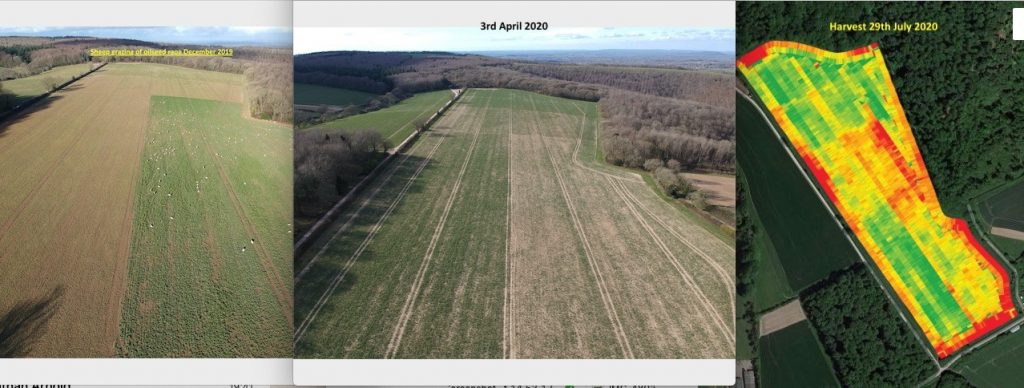
Having decided not to use insecticides any more on our crops, we are holding out a vague hope that by growing more habitat, and building potential predator numbers, we may still be able to grow a half respectable rape crop at some point in the future. It is already time to sow next year’s crop, albeit a reduced area compared to what we used to grow, but we have to keep trying. Bring on some rain and we will be out with the drill.
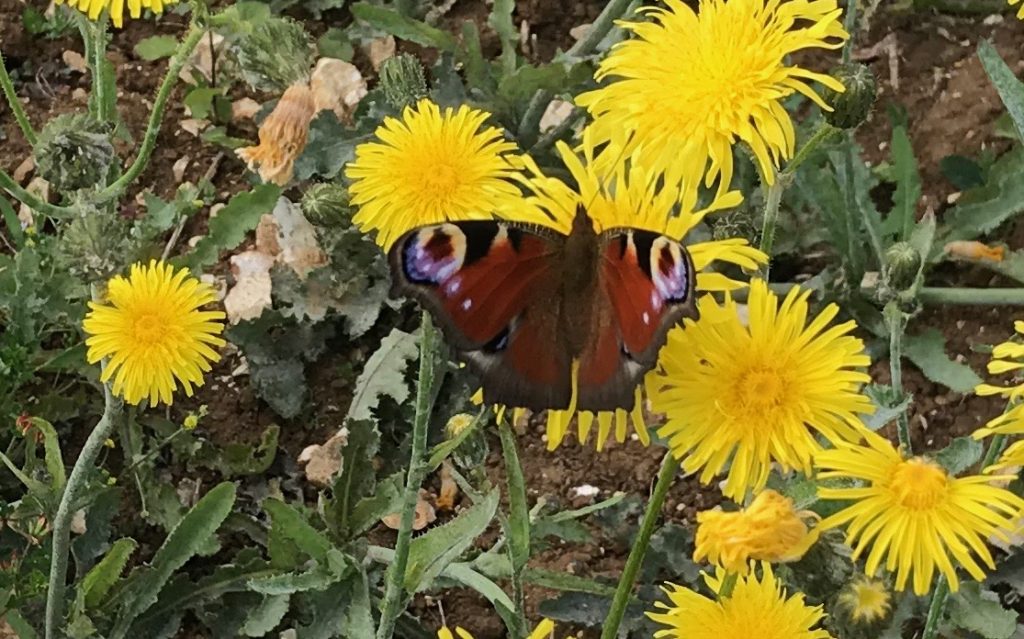
The long period of fantastic sunny weather throughout most of the summer has produced masses of lovely blooming wild flowers, and along with them a preponderance of insect life, we have seen more butterflies on the farm than for many years, Peacocks in huge numbers, they particularly favour the hemp agrimony and the perennial sowthistle, pictured here, also plenty of Gatekeepers, Ringlets, Orange tips, Red Admirals and others including the bane of gardeners’ lives, the large white, which loves to lay its eggs on precious brassicas, then the caterpillars hatch and lay waste to your winter greens.
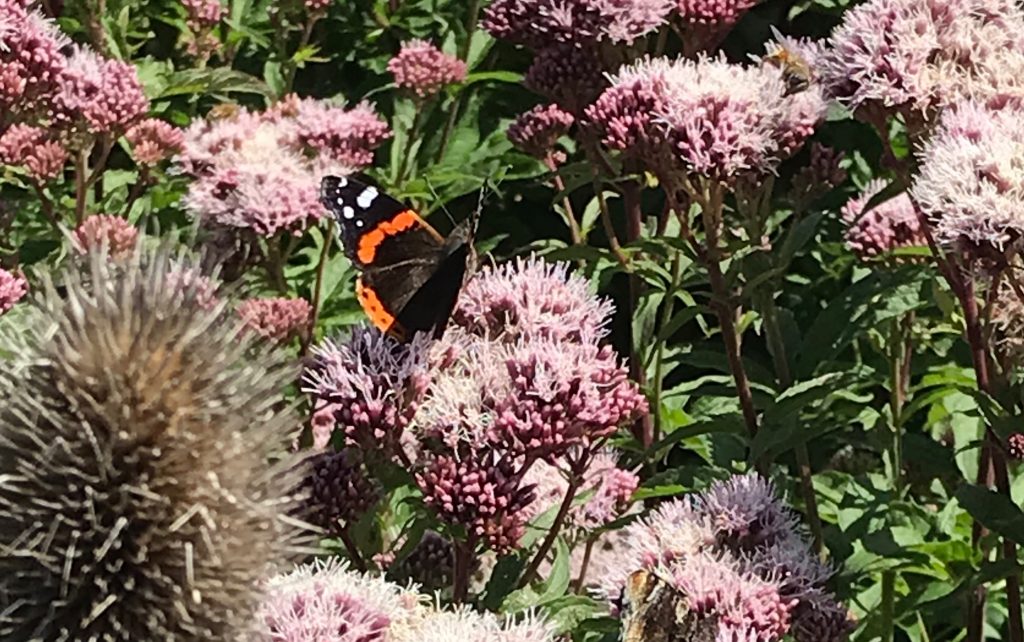
For some more flower and insect footage head to:
Don’t look now, there’s a monster creeping up on you…..

The Maris Piper potatoes are tasting good, early digging started a couple of weeks ago. We are hoping to borrow a spinner to help with harvest.
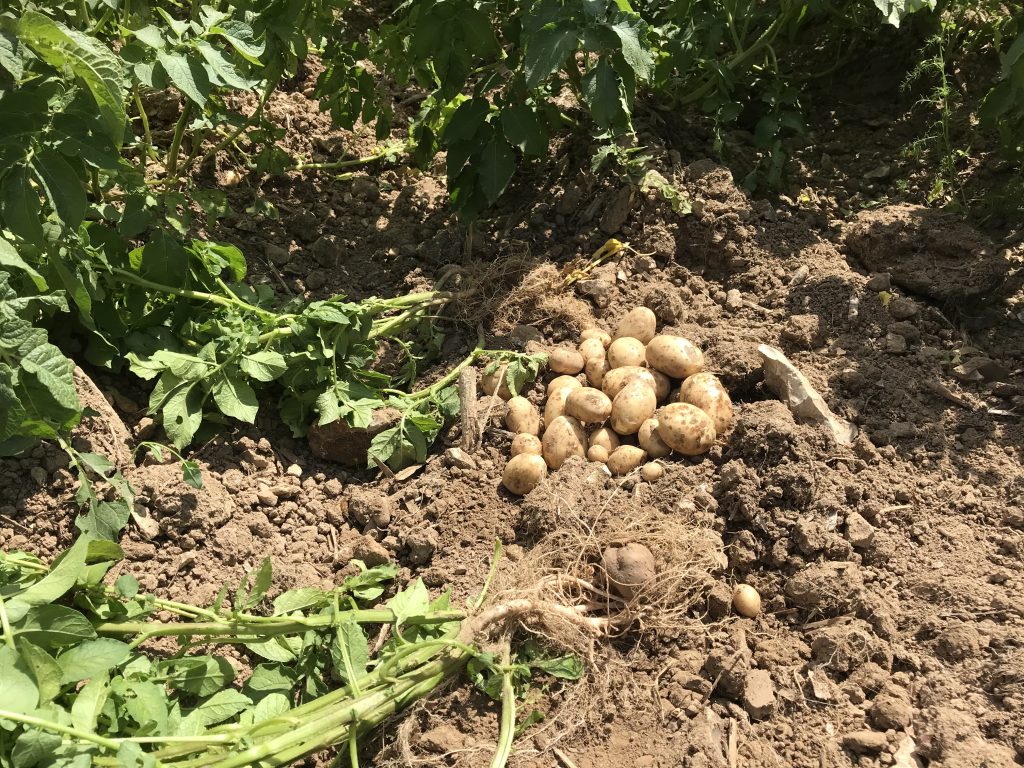
Don’t panic, it’s just another magnificent sunset, by Nicki Hosford
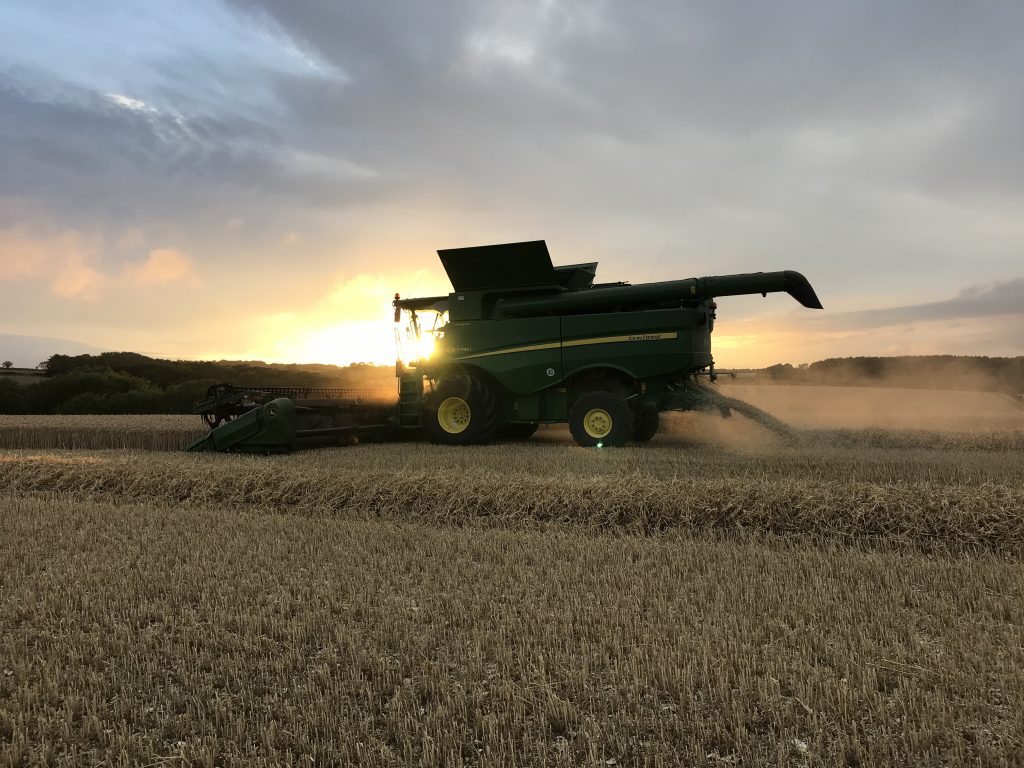
The Stickland-Bryanston highway is affected by a rolling roadblock
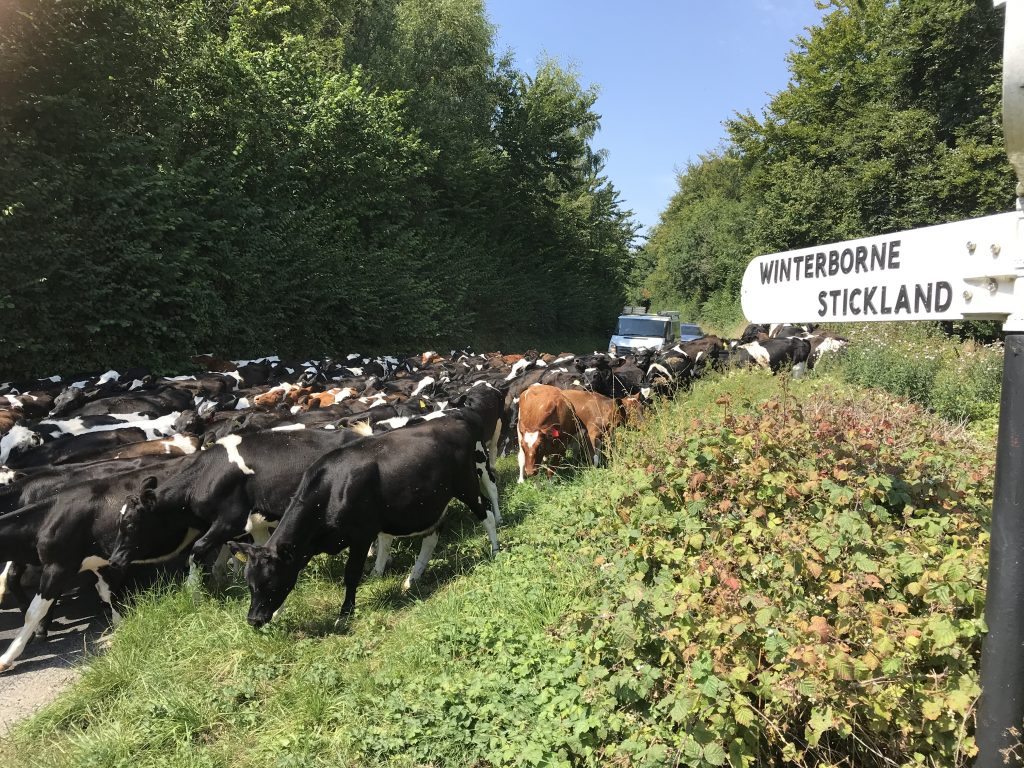
The old baler comes out for her annual 180 bales
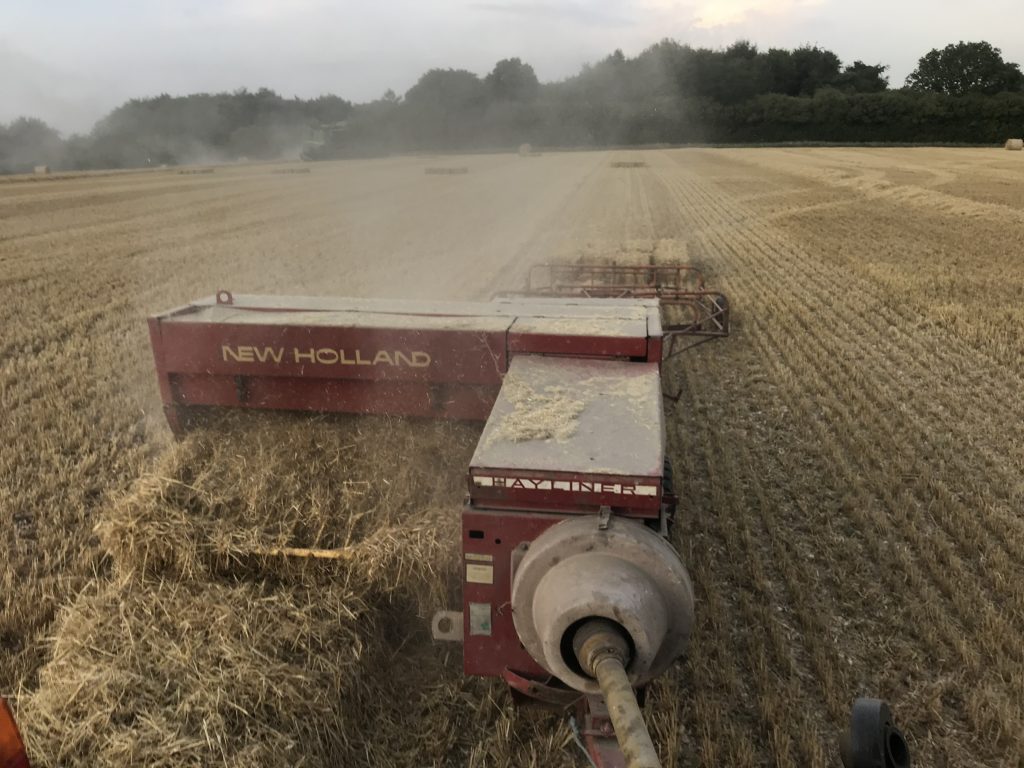

Will you repeat the rape grazing trial? Might be better in a different, dryer, winter.
The rolling Road block was amazing it definitely worked slows life down even slower
I have just paid quite a lot of money for a seed sample that doesn’t look as good as that, where can I get in touch with your marketing department?
Dear George,
Well here is the rain ☔️,let us hope that the seeds will indeed germinate and set some nitrogen. I love the language that makes non farmers like me understand just a tiny bit more about your very complicated interrelated jobs.Photographs continue to enhance the beauty.Thanks again.